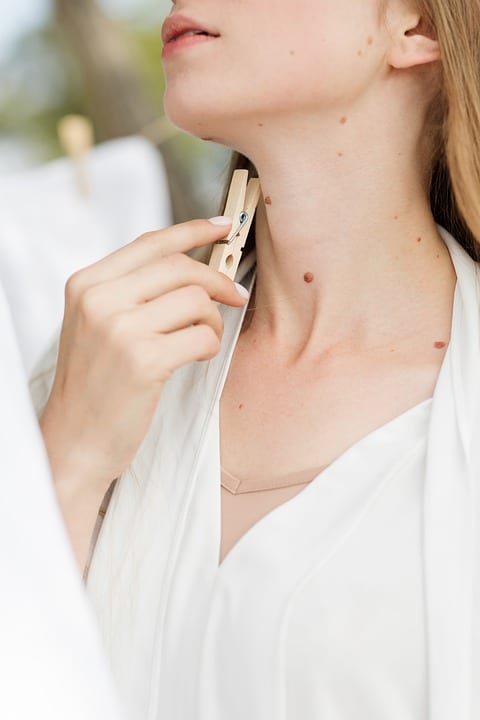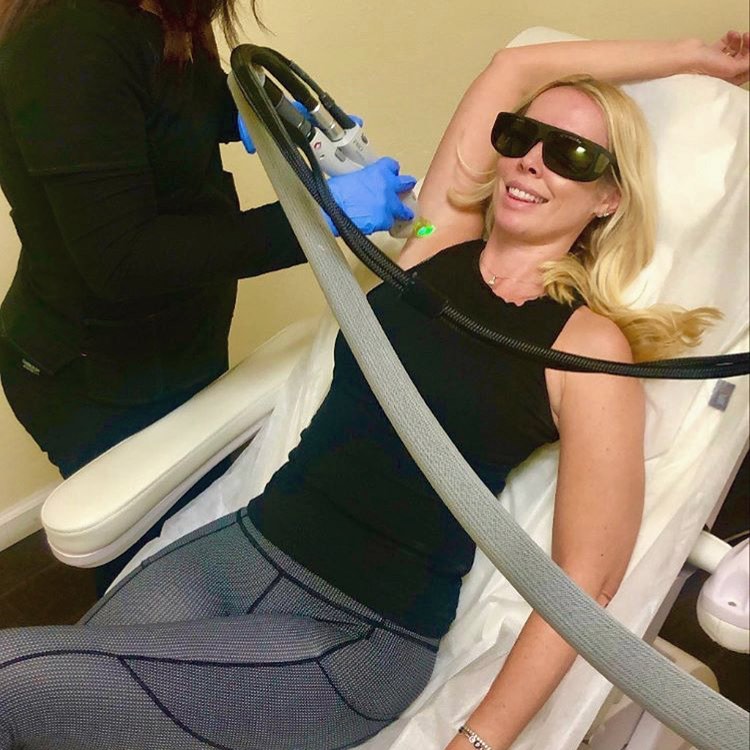Spoiled Laser, your premier destination for beauty transformation, is here to unveil the coveted secrets of mole removal for flawless skin in Vegas. With a wide range of premium services, including laser hair removal, skin bleaching, facial treatments, and body contouring, we are committed to helping you enhance your appearance and boost your confidence. In this article, we will delve into the world of mole removal, revealing the techniques, expertise, and meticulous care involved in achieving impeccable, blemish-free skin. Say goodbye to unwanted moles and hello to a flawless complexion as we uncover the secrets of mole removal at Spoiled Laser.
The Importance of Mole Removal
Moles, also known as nevi, are common skin growths that can appear anywhere on the body. While most moles are harmless and do not require treatment, there are instances where mole removal becomes necessary. Understanding the significance of removing certain moles is essential for maintaining optimal skin health and preventing potential risks.
Understanding the significance of removing moles
Mole removal is not always cosmetic; in many cases, it is a preventive measure. Some moles have the potential to develop into cancerous growths, such as melanoma. Early detection and removal of suspicious moles can significantly reduce the risk of skin cancer. Therefore, it is crucial to be aware of the types of moles that should be removed and seek professional help promptly.
Types of moles that should be removed
While most moles pose no threat, there are certain characteristics that may indicate the need for removal. These include:
- Asymmetry: Moles with irregular shapes or unequal halves may indicate an increased risk of skin cancer.
- Border irregularity: Moles with blurry, jagged, or notched edges may be a sign of potential melanoma.
- Color variation: Moles with multiple colors or shades should be examined by a dermatologist.
- Diameter: Moles larger than 6 millimeters in diameter should be evaluated by a professional.
- Evolution: Moles that change in size, shape, color, or elevation over time should receive medical attention.
Get Your Free Consultation Today
Professional Mole Removal Services
When it comes to removing moles, it is essential to seek professional help rather than attempting DIY methods. Professional mole removal services offer numerous advantages, including accurate diagnosis, safe procedures, and minimal scarring.
Why it’s important to seek professional help
Professional dermatologists or clinics specializing in mole removal have the expertise and experience to identify potentially cancerous moles accurately. Their training and knowledge allow them to assess the severity and recommend appropriate treatment options. Trusting professionals ensures that the removal process is conducted safely and efficiently.
Choosing the right clinic or dermatologist
Selecting the right clinic or dermatologist for mole removal is critical. Look for professionals who have a track record of successful mole removal procedures and positive reviews from previous patients. It is also essential to ensure that the clinic or dermatologist uses modern equipment and follows proper hygiene practices.
Common techniques used for mole removal
Professional mole removal services employ various techniques depending on the type of mole and its location. Some common techniques include:
- Surgical excision: The mole is surgically removed using a scalpel, and the wound is stitched for proper healing.
- Laser removal: High-intensity laser beams are used to break down the pigments within the mole, gradually fading it away.
- Shave excision: A blade or razor is used to shave the mole off at the skin’s surface, with minimal cutting or stitching.
Recovery process and aftercare tips
After mole removal, proper care is necessary to ensure a smooth recovery and minimize the chances of scarring. Dermatologists typically provide aftercare instructions, including:
- Keeping the treated area clean and dry to reduce the risk of infection.
- Applying antibiotic ointment and keeping the wound covered with a sterile bandage.
- Avoiding exposure to direct sunlight and applying sunscreen to protect the healing skin.
- Avoiding strenuous activities or activities that may cause friction to the treated area.
Home Remedies and Natural Methods
While professional mole removal services are the recommended approach, some individuals may be tempted to try do-it-yourself mole removal methods. It is important to understand the potential risks and limitations of home remedies before proceeding.
Does DIY mole removal actually work?
Home remedies for mole removal, such as applying garlic, apple cider vinegar, or other natural substances, may seem convenient and cost-effective. However, the effectiveness of these methods is questionable, and there is a lack of scientific evidence to support their success. DIY mole removal can lead to complications, infections, scarring, and delayed diagnosis of potentially cancerous moles.
Natural remedies for mole removal
If one still wishes to explore natural options, there are some popular natural remedies that people claim to have worked for them. These include:
- Tea tree oil: Known for its antiseptic properties, tea tree oil is believed to help fade moles gradually.
- Frankincense oil: It is believed to have skin-regenerating properties that may aid in the removal of moles.
- Flaxseed oil: Some individuals claim that applying flaxseed oil topically helps reduce the appearance of moles.
Potential risks and limitations of home remedies
Home remedies for mole removal not only lack scientific backing but also carry potential risks. These risks include:
- Infection: Improper handling of the mole or unsanitary conditions can lead to infections.
- Scarring: DIY methods may not offer the precision needed for mole removal, increasing the chance of scarring.
- Delayed diagnosis: Attempting to remove a mole without professional evaluation may delay the detection of cancerous moles.
Caution: Averting Mole Removal Scams
When seeking mole removal services, it is crucial to be aware of common scams prevalent in the industry. Protecting yourself from fraudulent services is essential for your health and well-being.
Recognizing common scams in the industry
Some common mole removal scams include:
- Fake doctors or clinics: Scammers may pose as medical professionals or operate unlicensed clinics.
- Exorbitant fees: Beware of clinics that overcharge for mole removal services without providing proper care or expertise.
- Unproven treatments: Scammers may offer untested or ineffective treatments, preying on vulnerable individuals.
Red flags to watch out for
To avoid falling victim to mole removal scams, watch out for the following red flags:
- Lack of credentials: Ensure that the clinic or dermatologist is licensed and certified to perform mole removal procedures.
- Pressure tactics: Be cautious of high-pressure sales tactics used to convince you to undergo unnecessary treatments.
- Unrealistic claims: If the promises made by the clinic or dermatologist sound too good to be true, they probably are.
Protecting yourself from fraudulent services
To safeguard yourself from fraudulent mole removal services, take the following precautions:
- Research and verify: Conduct thorough research on the clinic or dermatologist, checking their credentials and reputation.
- Seek referrals: Ask for recommendations from trusted friends, family, or medical professionals who have undergone mole removal procedures.
- Consult multiple providers: Take the time to consult with multiple dermatologists or clinics to compare their recommendations and treatment plans.
Medical Considerations for Mole Removal
Some moles may require medical attention beyond cosmetic removal. Understanding when to consult a doctor, undergoing medical evaluation and diagnosis, and exploring treatment options for cancerous moles are crucial for managing mole-related health concerns.
When should you consult a doctor?
Consult a doctor if you notice any of the following signs related to a mole:
- Changes in size, shape, or color.
- Inflammation, itchiness, or bleeding.
- Rapid growth or development of multiple moles.
- Pain or discomfort around the mole.
Medical evaluation and diagnosis
When you consult a doctor for mole-related concerns, they will conduct a thorough evaluation and diagnosis. This may involve:
- Physical examination: The doctor will examine the mole and other areas of your skin to determine any signs of malignancy.
- Medical history: The doctor will inquire about your personal and family history of skin cancer and other relevant medical conditions.
- Dermatoscopy: This non-invasive diagnostic technique involves using a magnifying instrument to examine the mole’s surfaces and structures more closely.
Biopsy procedures for suspicious moles
If the doctor suspects a mole to be cancerous, a biopsy may be necessary for accurate diagnosis. Common biopsy procedures include:
- Excisional biopsy: The entire mole is surgically removed, along with a margin of normal skin, and sent for laboratory examination.
- Incisional biopsy: A portion of the mole is removed and examined under a microscope to determine the presence of cancer cells.
- Punch biopsy: A circular tool is used to remove a small cylinder-shaped sample from the mole for further analysis.
Treatment options for cancerous moles
If a mole is diagnosed as cancerous, treatment options will depend on factors such as the type and stage of skin cancer. Common treatment options include:
- Surgical excision: The mole and a surrounding margin of healthy skin are surgically removed to ensure complete removal of the cancerous cells.
- Mohs micrographic surgery: This specialized technique involves removing thin layers of skin one at a time and examining them under a microscope until no abnormal cells are detected.
- Radiation therapy: In some cases, radiation therapy may be used to target and destroy cancer cells in and around the mole.
Post-Mole Removal Skincare Routine
After undergoing mole removal, caring for the treated area is crucial for proper healing and minimizing the risk of complications. Following a post-mole removal skincare routine can help promote skin recovery and reduce the visibility of any resulting scars.
Caring for the treated area after mole removal
To care for the treated area after mole removal, follow these general guidelines:
- Keep the area clean: Gently clean the area with mild soap and water, patting it dry with a clean towel.
- Apply prescribed medications: If your dermatologist has prescribed any creams, ointments, or antibiotics, follow their instructions for application.
- Avoid picking or scratching: Resist the urge to pick at any scabs or irritated skin, as this can lead to infection and scarring.
- Avoid exposing the area to sunlight: Protect the treated area from direct sunlight by covering it or applying a broad-spectrum sunscreen with a high SPF.
Recommended skincare products and routines
To aid in the healing process and promote healthy skin after mole removal, consider incorporating the following products and routines:
- Gentle cleanser: Opt for a gentle cleanser that is free from harsh chemicals or fragrances to avoid further irritation.
- Moisturizer: Choose a non-comedogenic moisturizer to keep the skin hydrated without blocking pores.
- Scar treatment creams or gels: Consult with your dermatologist about the suitability of scar treatment products to minimize any potential scarring.
- Sunscreen: Apply a broad-spectrum sunscreen with a high SPF regularly, even if the treated area is covered.
Minimizing scarring and promoting skin recovery
While some scarring is inevitable after mole removal, taking certain steps can help minimize the appearance of scars and promote skin recovery:
- Massage the area: Gently massaging the treated area with clean hands or a moisturizer can help soften the scar tissue and improve blood circulation.
- Protect the area from direct sunlight: Ultraviolet (UV) radiation can darken scars and inhibit the healing process, so it is important to shield the area from the sun.
- Opt for silicone gel sheets or dressings: These can help flatten and soften scars when applied over the treated area as per your dermatologist’s recommendations.
Preventing Future Mole Development
While it may not be possible to prevent all moles from developing, certain lifestyle changes and proactive measures can help reduce the risk of future mole formation.
Understanding the causes of mole formation
Moles develop when melanocytes, the pigment-producing cells in the skin, grow in clusters instead of being spread evenly. While the exact causes of this clustering are not fully understood, several factors contribute to mole formation, including:
- Genetics: Family history plays a significant role in determining an individual’s predisposition to developing moles.
- Sun exposure: Prolonged exposure to ultraviolet radiation from the sun can increase the number of moles on the skin.
- Hormonal changes: Hormonal fluctuations during adolescence, pregnancy, or other life stages can stimulate the development of new moles.
Lifestyle changes for mole prevention
To reduce the risk of mole formation, consider implementing the following lifestyle changes:
- Sun protection: Limit sun exposure, especially during peak hours, and use protective clothing, hats, and sunglasses. Apply sunscreen with a high SPF regularly to exposed areas.
- Avoid tanning beds: Artificial sources of UV radiation, such as tanning beds, can contribute to the development of moles and increase the risk of skin cancer.
- Regular self-examinations: Conduct regular self-examinations of your skin to monitor existing moles and detect any changes or new moles.
Regular skin checks and early detection
Regular skin examinations by a dermatologist are crucial for early detection and treatment of potentially cancerous moles. Dermatologists can perform thorough skin checks and monitor any changes in existing moles or the development of new ones. Early detection increases the chances of successful treatment and reduces the risk of complications.
Myths and Misconceptions about Mole Removal
Mole removal is subject to many myths and misconceptions, which can lead to confusion and misinformation. It is important to separate fact from fiction to make informed decisions about mole removal procedures.
Separating fact from fiction about mole removal
Here are some common myths about mole removal debunked by expert opinions and scientific evidence:
- Myth: Removing a mole will cause it to grow back larger or multiply. Fact: Properly removed moles do not grow back. However, new moles may develop over time due to factors such as sun exposure or hormonal changes.
- Myth: Cutting off a mole at home is a safe and effective method. Fact: DIY mole removal can lead to complications, scarring, and delayed diagnosis of potentially cancerous moles. Professional help is recommended for safe and accurate removal.
- Myth: Natural remedies can effectively remove moles. Fact: While some natural remedies may have anecdotal success stories, there is limited scientific evidence supporting their effectiveness. Professional mole removal services are the recommended approach.
Dispelling common misconceptions
Let’s further dispel some common misconceptions surrounding mole removal:
- Misconception: All moles are cancerous or precursors to skin cancer. Clarification: The majority of moles are non-cancerous and harmless. However, it is essential to monitor moles for any suspicious changes and consult a dermatologist if concerned.
- Misconception: All mole removal procedures result in visible scars. Clarification: While some scarring may occur, skilled dermatologists use techniques and aftercare methods to minimize scarring and promote optimal skin healing.
- Misconception: Only dark or raised moles need to be removed. Clarification: The decision to remove a mole should be based on various factors, including its characteristics, potential for malignancy, and personal preference.
Expert opinions and scientific evidence
Medical professionals and dermatologists are in agreement that professional mole removal services are the standard recommendation for safe and accurate removal. Expert opinions and scientific evidence support the effectiveness of professional procedures compared to DIY or natural methods.
Psychological Impact of Mole Removal
Mole removal can have a significant psychological impact on individuals. Understanding the potential body image and self-esteem considerations, coping with the emotional aspects, and seeking supportive resources are important for mental well-being.
Body image and self-esteem considerations
Moles, especially when located on visible areas of the body, can impact an individual’s self-image and confidence. The decision to remove a mole can stem from personal aesthetic preferences or concerns about potential health risks. The removal process itself can bring both relief and anxiety related to the outcome.
Coping with the emotional aspects of mole removal
Mole removal can elicit a range of emotions, including relief, fear, and anxiety. It is essential to acknowledge and address these emotions to promote overall well-being. Coping strategies may include:
- Seeking support: Share your concerns and feelings with trusted friends, family, or support groups to receive understanding and empathy.
- Education and awareness: Educate yourself about mole removal procedures, associated risks, and benefits to alleviate anxiety and make informed decisions.
- Positive self-talk: Challenge negative thoughts and focus on the improved health or appearance after mole removal. Remind yourself that you are taking steps to prioritize your well-being.
Supportive resources and counseling options
If the emotional impact of mole removal becomes overwhelming, seeking professional support can be beneficial. Counseling or therapy sessions can provide a safe space to explore feelings and develop healthy coping strategies. Additionally, supportive resources such as online forums or support groups can connect individuals who have undergone similar experiences.
Case Studies: Success Stories and Transformations
Real-life experiences of individuals who have undergone mole removal can serve as encouraging accounts for those considering the procedure. Case studies provide insight into the process, outcomes, and personal transformations.
Real-life experiences of individuals who underwent mole removal
Sharing success stories and personal accounts from individuals who have undergone mole removal can inspire and inform others. These stories shed light on the different types of moles, reasons for removal, and the benefits individuals experienced after the procedure.
Before and after pictures of mole removal
Before and after pictures are powerful visual representations of the transformation that can occur after mole removal. These images can showcase the effectiveness of professional mole removal services and instill confidence in individuals considering the procedure.
Testimonials and personal accounts
Testimonials and personal accounts capture the emotions, experiences, and satisfaction of individuals who have undergone mole removal. These firsthand narratives highlight the impact on self-image, confidence, and overall well-being.
In conclusion, understanding the importance of mole removal and seeking professional assistance when necessary is crucial for maintaining optimal skin health and preventing potential risks. However, it is equally important to be cautious of scams, recognize the limitations of home remedies, and consider the psychological impact of mole removal. By staying informed, taking proactive measures, and seeking professional help when needed, individuals can effectively manage their mole-related concerns and maintain flawless skin.



